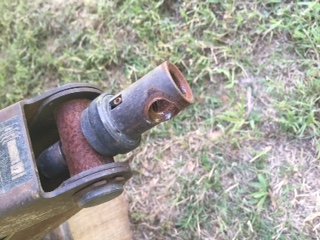"Stabilizer" jacks, in the four corners of the trailer, were meant to "stabilize" a trailer so that it doesn't move and bounce around a lot when you walk around inside the trailer. They are suppose to be snubbed only and not over tightened in order to lift and level a trailer. The trailer should be leveled side to side using boards or pads, meant for that purpose, under the tires on the low side. Of course the tongue jack is used to level the trailer end to end after unhitching. If you try to level, more than just a little, using the stabilizer jacks you risk bending the trailer frame resulting in the axles/tires being out of line. The exception to this, I have read, is on very light tent trailers where they can be used for leveling. I will confess that I do sometimes do some minor "tuning" of my leveling job once I get it real close by rolling the wheels up on boards. I'm talking like maybe an extra turn on the jack once the feet touch down. The instructions on stabilizer jacks usually call for around 1/8th turn after contacting the ground or jack pad. Now, I know some will say "I always level my trailer with these jacks"...that's fine, I'm just trying to answer with accurate information.
I keep my stabilizer jacks lubricated and they easily go up and down using my electric drill. However, I do sometimes have to loosen a stabilizer jack with the manual crank tool before it will go down using the drill and I always use the crank tool to make sure the jacks are all the way up and tight after running them up with the drill.
I "guess" it is OK to use an impact wrench as long as you are not lifting the trailer with the jacks. However, I prefer to use an electric drill for more control of how much force I am applying to the trailer frame with the jack. My drill is an inexpensive Sears battery drill. Lubrication on the jack screws is the key here.

